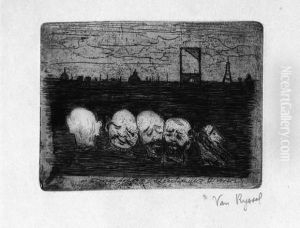Paul-Ferdinand Dit Docteur Gachet Paintings
Paul-Ferdinand Gachet, commonly known by his title 'Docteur Gachet,' was a French physician, homeopath, and art enthusiast, whose name has forever been immortalized in the annals of art history, not only for his medical practices but also for his significant role as a patron and friend to many impressionist painters, most notably Vincent van Gogh. Born on July 30, 1828, in Lille, France, Gachet pursued medical studies in Paris, where he developed a keen interest in mental health issues, a field in which he would specialize. His career as a doctor and his passion for the arts converged in a unique way, leading him to become an important figure in the Parisian art scene of the late 19th century.
Throughout his life, Gachet was deeply involved with the impressionist movement, providing support, medical care, and friendship to its artists. He was particularly close to Vincent van Gogh and Paul Cézanne, among others, and played a crucial role during the final months of Van Gogh's life. After Van Gogh moved to Auvers-sur-Oise in May 1890, on the recommendation of his brother Theo, Dr. Gachet took the artist under his care. Despite battling his own depressive episodes, Gachet provided both medical attention and personal support to Van Gogh, encouraging his artistic endeavors. Their relationship was famously commemorated by Van Gogh in the painting 'Portrait of Dr. Gachet,' which has become one of the most revered and valuable portraits in the world of art.
Beyond his interactions with Van Gogh, Gachet was an avid collector and amateur artist himself. He amassed a significant collection of impressionist artworks, including pieces by Manet, Renoir, and Pissarro, and produced etchings and paintings, often under the pseudonym 'Paul van Ryssel.' His home in Auvers-sur-Oise became a gathering place for artists, where he offered them not only medical advice but also artistic criticism and encouragement.
Docteur Gachet's contributions to the art world extended beyond his lifetime, as his collection and legacy have been subjects of study and admiration. He died on January 9, 1909, in Auvers-sur-Oise, leaving behind a rich legacy that bridges the worlds of medicine and art. Today, he is remembered not only for his medical career but also for his profound impact on the lives and careers of some of the most influential artists of the impressionist era.
